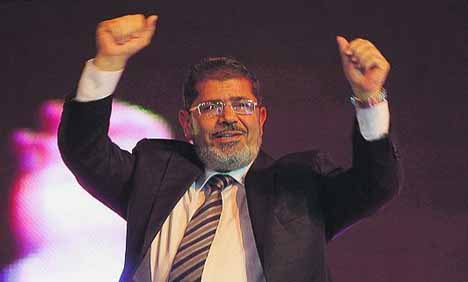AFP – Key developments in Egypt, where three bomb attacks Friday targeting police killed five people on the eve of the anniversary of the 2011 uprising that toppled president Hosni Mubarak:
— 2011 —

– 25 January: Massive protests erupt, after a revolt topples Tunisia’s ruler. About 850 people die in unrest over 18 days.
– 11 February: Mubarak resigns after 30 years in power and hands power to the army which suspends the constitution and dissolves parliament.
– 28 November: Egypt holds the first stage of its first post-revolt parliamentary election. Islamists win about two-thirds of the seats, half of which go to the Muslim Brotherhood.
— 2012 —

– 30 June: Mohamed Morsi wins the presidential election with 51.7 percent of the vote, becoming Egypt’s first civilian and Islamist ruler.
– 12 August: Morsi scraps a constitutional document which allowed the military legislative powers.
– 15 and 22 December: 64 percent of voters in a two-round referendum back the new constitution, but opposition groups claim the poll was tainted.
— 2013 —

– 24 January: Violence erupts on the eve of the second anniversary of the 2011 uprising. At least 60 people die in a week.
– 3 July: The military ousts Morsi after massive protests against his one-year rule, and freeze the Islamist-drafted constitution. Morsi calls it a “coup”.
– 14 August: Security forces move against pro-Morsi protest camps in Cairo, killing hundreds. A month-long state of emergency is declared.
– 22 August: Mubarak comes out of jail after 28 months in detention.
– 6 October: Nearly 60 people are killed when security forces crack down on Morsi supporters marching towards Cairo’s Tahrir Square.
– 4 November: Morsi goes on trial for alleged involvement in the killings of opposition protesters.
– 24 December: A car bomb rips through a police building in Mansoura, north of Cairo, killing 15 people. An Al-Qaeda-inspired group based in the Sinai, Ansar Beit Al-Maqdis, claims responsibility.
– 25 December: The government declares the Brotherhood a terrorist organisation.
— 2014 —

– 14-15 January: Egyptian voters approve a new constitution by a vote of 98.1 percent, with turnout reaching 38.6 percent of 53 million registered voters.
– 24 January: A massive suicide bomb hits the Cairo police headquarters, the first of three blasts in the Egyptian capital, kills four people and wounds more than 70. Hours later a police conscript dies when a makeshift bomb explodes near a police car. No casualties are reported from a third bombing outside a police station on the Giza pyramids road.



